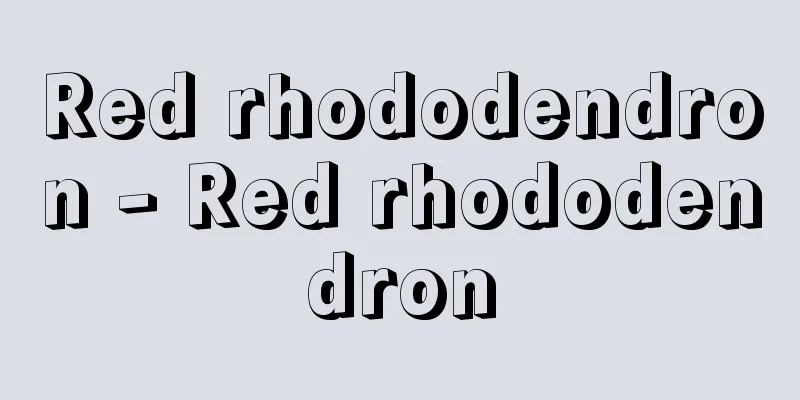Difficulty swallowing

|
Concept Dysphagia is defined as an inability to move food from the mouth to the stomach. Symptoms of dysphagia include difficulty swallowing food, choking or coughing when swallowing, and a feeling of something getting stuck in the esophagus. A feeling of abnormality in the pharynx is not true dysphagia, but is a frequent symptom. A feeling of abnormality in the pharynx often does not indicate an organic abnormality, and psychological factors or the reflux of gastric juices into the esophagus have been suggested as possible causes. Odynamism is pain felt in the chest or back when swallowing, and is treated separately from dysphagia. Depending on the location of the pathophysiological disorder, dysphagia can be divided into oropharyngeal and esophageal dysphagia. Depending on the cause, dysphagia can be broadly divided into organic dysphagia caused by structural abnormalities and functional dysphagia caused by functional abnormalities (Table 2-10-1). 1) Functional dysphagia: Functional dysphagia occurs due to abnormalities in swallowing movements. Swallowing movements are divided into the oral phase (phase I), pharyngeal phase (phase II), and esophageal phase (phase III). The oral phase is a voluntary movement that moves chewed food from the mouth to the pharynx. The pharyngeal phase is a reflex involuntary movement that moves food from the pharynx to the esophagus. The esophageal phase is also an involuntary movement and refers to movement from the esophageal opening to the cardia. Dysphagia occurs when any of these movements are impaired. Oral and pharyngeal movements are regulated from the center via the pharyngeal nerve, vagus nerve, and hypoglossal nerve, and central nervous disorders such as cerebrovascular disorders and peripheral nerve disorders can cause oropharyngeal dysphagia. Furthermore, in muscle diseases such as muscular dystrophy, dysphagia occurs due to a decrease in the strength of the muscles involved in swallowing. Esophageal dysphagia caused by functional disorders includes achalasia, diffuse esophageal spasm, and scleroderma. In esophageal achalasia, abnormalities in the esophageal myenteric plexus cause loss of esophageal peristalsis and impaired relaxation of the lower esophageal sphincter, resulting in dysphagia, but the cause remains unknown. In scleroderma, dysphagia occurs primarily due to motility disorders of the lower esophagus caused by damage to the smooth muscle of the esophagus, which is exacerbated by secondary severe reflux esophagitis. 2) Organic dysphagia: Organic dysphagia is caused by structural abnormalities in the oral cavity, pharynx, or esophagus, such as absolute or relative narrowing of the lumen, resulting in difficulty in swallowing. Organic abnormalities that can cause oropharyngeal dysphagia include tumors, inflammation, and deformities. Not only abnormalities on the internal side, such as marked hypertrophy of the tonsils and tumors in the oral cavity or pharynx, but also external pressure on the pharynx due to goiter or cervical lymph node swelling, can contribute to passage obstruction. Zenker's diverticulum is a diverticulum found on the posterior wall of the pharyngoesophageal junction, and even small ones can easily cause dysphagia, whereas diverticula in other locations are less likely to cause dysphagia. As such, it is believed that the mechanism involves impaired pharyngeal swallowing movements. Plummer-Vinson syndrome has three main symptoms: iron deficiency anemia, glossitis, and esophageal webs, with dysphagia caused by webs in the upper esophagus. Esophageal cancer and gastric cancer in the cardia cause difficulty in swallowing as the tumor progresses; initially, only solid foods are affected, but as the tumor progresses, esophageal atresia occurs and even liquids become difficult to swallow. Esophageal foreign bodies such as dentures or swallowed coins can also cause dysphagia. Difficulty in swallowing can also occur with tumors outside the esophagus and aortic aneurysms. Difficulty in swallowing occurs after sclerotherapy for esophageal ulcer scarring, reflux esophagitis, and esophageal varices due to scarring and abnormal motility of the esophageal wall. Schatzki rings are stenoses caused by tissue rings consisting of the mucosa and submucosa found in the lower esophagus, and the degree of dysphagia is determined by the diameter of the lumen caused by the stenosis. When similar rings are found in the upper part of the esophagus or the hypopharynx, they are called webs to distinguish them from other types of rings. Differential diagnosis: Based on symptoms and physical examination findings, including observation of the oral cavity and swallowing movements, it is determined whether the dysphagia is oropharyngeal or esophageal, and examinations are then carried out (Figure 2-10-1). With oropharyngeal dysphagia, the patient is unable to swallow food properly, so the food remains in the oral cavity or pharynx, causing symptoms such as choking and coughing. With esophageal dysphagia, the patient feels that the swallowed food is stuck in the esophagus. Most oropharyngeal dysphagia is caused by nerve or muscle disorders, and organic disorders are rare. If the patient is diagnosed with oropharyngeal dysphagia, a neurological examination and an otolaryngological examination are performed, followed by endoscopic examination of the pharynx and esophagus, contrast X-ray examination, CT scan of the head and neck, and MRI examination to diagnose the underlying disease. If the patient is diagnosed with esophageal dysphagia based on symptoms, endoscopic examination and contrast X-ray examination are useful for diagnosis. Symptoms can also help differentiate diseases to a certain extent (Figure 2-10-2). In organic diseases such as esophageal cancer, only solid foods often get stuck in the esophagus, whereas in functional diseases such as achalasia, not only solid foods but also liquid foods often get stuck in the esophagus. Endoscopic examination is extremely useful for diagnosing esophageal cancer and gastric cancer of the cardia, and a histopathological diagnosis can be made by biopsy. If endoscopic examination suggests that there is external compression of the esophagus, a CT or MRI is necessary. If no organic abnormality is found, a functional disorder such as esophageal achalasia should be suspected. Esophageal manometry is useful for diagnosing esophageal achalasia. [Shinomura Yasuhisa] ■ References Castell DO, et al: Approach to the patient with dysphagia and odynophagia. In: The Textbook of Gastroenterology, 3rd ed (Yamada T, et al eds), pp383-393, Lippincott Williams & Wilkins, Philadelphia, 1999. Diseases that cause swallowing disorders "> Table 2-10-1 Symptoms and tests for dysphagia "> Figure 2-10-1 Differentiation of esophageal dysphagia by symptoms "> Figure 2-10-2 Source : Internal Medicine, 10th Edition About Internal Medicine, 10th Edition Information |
|
概念 嚥下困難は,口腔から胃への食物の移送がうまくいかないことと定義される.嚥下困難の症状としては,食物が飲み込みにくい,飲み込むときにむせたり咳き込んだりする,食道につかえる感じがするなどがある.咽頭異常感は真の嚥下困難ではないが,しばしばみられる症状である.咽頭異常感は器質的な異常を認めないことが多く,精神的要因や胃液の食道への逆流が原因として示唆されている.また,嚥下痛は嚥下時に胸部や背部にみられる痛みであり,嚥下困難とは区別して扱われる. 病態生理 障害の部位により,口腔咽頭性嚥下困難と食道性嚥下困難に分けられる.また,原因により嚥下困難は構造の異常による器質的嚥下困難と機能の異常による機能的嚥下困難に大別される(表2-10-1). 1)機能性嚥下困難: 機能性嚥下困難は嚥下運動の異常により起こる.嚥下運動は,口腔期(嚥下第Ⅰ期),咽頭期(嚥下第Ⅱ期)および食道期(嚥下第Ⅲ期)に分けられる.口腔期は咀嚼された食物を口腔から咽頭へ送る随意運動である.咽頭期は食物を咽頭から食道へ送る運動で,反射性の不随意運動である.食道期も不随意運動であり,食道口から噴門までの運動をよぶ.これらの運動のいずれかの障害で嚥下困難を生じる.口腔,咽頭の運動は咽頭神経,迷走神経,舌下神経を介して中枢から調節されており,脳血管障害など中枢神経の障害や末梢神経障害などは,口腔咽頭性嚥下障害の原因となる.また,筋ジストロフィなどの筋疾患では,嚥下にかかわる筋力の低下により嚥下困難が起こる.機能性障害で起こる食道性嚥下困難にはアカラシア,びまん性食道痙攣,強皮症などがある.食道アカラシアでは食道筋間神経叢の異常により食道の蠕動運動の消失と下部食道括約筋の弛緩不全が起こり,嚥下困難が生じるが,その病因はいまだ明らかになっていない.強皮症では食道の平滑筋の障害によりおもに下部食道の運動障害により嚥下困難が起こるが,二次的に起こる高度の逆流性食道炎がそれを助長する. 2)器質的嚥下困難: 器質的嚥下困難は口腔,咽頭,食道の構造上の異常によって起こるものであり,絶対的あるいは相対的な内腔の狭さなどに起因して嚥下困難が生じる. 口腔咽頭性嚥下困難の原因となる器質的異常には,腫瘍や炎症,奇形などがある.扁桃の著明な肥大,口腔,咽頭の腫瘍など内腔側の異常ばかりでなく,甲状腺腫や頸部リンパ節腫脹などによる外方からの咽頭圧迫も通過障害の一因となりうる.Zenker憩室は咽頭食道移行部の後壁にみられる憩室で小さいものでも嚥下困難をきたしやすく,ほかの部位の憩室では嚥下困難はきたしにくいことから,その機序に咽頭期の嚥下運動の障害が関与すると考えられている.Plummer-Vinson症候群は鉄欠乏性貧血と舌炎,食道ウェブを3主徴とし,上部食道のウェブ(web)により嚥下困難をきたす. 食道癌や噴門部胃癌では腫瘍の進行に応じて嚥下困難をきたし,初期は固形物のみであるが進行すると食道閉鎖をきたし液体でも嚥下が困難となる.義歯や硬貨誤嚥などの食道異物も嚥下障害の原因となる.食道外の腫瘍や大動脈瘤でも嚥下困難を生じることがある.食道潰瘍瘢痕,逆流性食道炎,食道静脈瘤硬化療法後では,瘢痕による狭窄と食道壁の運動異常により嚥下困難が生じる.Schatzki輪は下部食道にみられる粘膜と粘膜下組織からなる組織の輪による狭窄であり,狭窄による内腔の径により嚥下困難の程度が規定される.同様の輪が食道の上部や下咽頭にみられる場合はウェブとよばれ区別される. 鑑別診断 症状や口腔内や嚥下運動の観察を含む身体所見から口腔咽頭性嚥下困難か,食道性嚥下困難かを判断し,検査を進める(図2-10-1).口腔咽頭性嚥下困難では食物を飲み込もうとしてうまくいかないために,飲み込もうとする食物が口腔内や咽頭にとどまり,むせたり咳き込んだりなどの症状が起こる.食道性嚥下困難では,飲み込んだものが食道につかえる感じを自覚する.口腔咽頭性嚥下困難の原因の大半は神経,筋の障害によるもので,器質的障害によるものは少ない.口腔咽頭性嚥下困難と判断された場合は,神経学的診察および耳鼻咽喉科的診察を行い,さらに咽頭および食道の内視鏡検査,X線造影検査,頭部および頸部のCT,MRI検査などを行って原因疾患を診断する. 症状から食道性嚥下困難と判断される場合は,内視鏡検査や造影X線検査が診断に有用である.症状からもある程度は疾患を鑑別することができる(図2-10-2).食道癌などの器質的な疾患では,固形物のみが食道につかえることが多く,アカラシアなどの機能的な疾患では固形物ばかりでなく流動物も食道につかえることが多い.食道癌や噴門部胃癌の診断には内視鏡検査がきわめて有用で,生検により病理組織学的に診断が可能である.内視鏡検査で食道外部からの圧迫が疑われる場合はCTあるいはMRIが必要である.器質的な異常がない場合は,食道アカラシアなどの機能的障害を疑う.食道アカラシアの診断には食道内圧検査が有用である.[篠村恭久] ■文献 Castell DO, et al: Approach to the patient with dysphagia and odynophagia. In: The Textbook of Gastroenterology, 3rd ed (Yamada T, et al eds), pp383-393, Lippincott Williams & Wilkins, Philadelphia, 1999. 嚥下障害をきたす疾患"> 表2-10-1 嚥下困難の症状と検査"> 図2-10-1 症状による食道性嚥下困難の鑑別"> 図2-10-2 出典 内科学 第10版内科学 第10版について 情報 |
<<: Engagement Rings - Engagement Rings
Recommend
Coligny (English spelling) Gaspard de Châtillon, Comte de
Born: 16 February 1519, Châtillon-sur-Loing Died A...
kleśa (English spelling) klesa
…The original Sanskrit word kleśa is the noun for...
Flatulence - Kocho (English spelling) Meteorism
It refers to the abnormal accumulation of gas in ...
Decimal - decimal
One tenth of 1 is expressed as 0.1, one tenth of ...
Engagement ceremony - Yuinou
Prior to marriage, money and gifts are usually gi...
Anahata Chakra - You are
…In Hatha Yoga and Tantric texts, there are usual...
Kensuke Mitsuda
A doctor who devoted himself to the relief of lep...
Olfactory cleft
…When we inhale through our nose, the air that en...
Benzidine - benzidine
An aromatic amine. Also called 4,4'-diaminobi...
Miekou - Miekou
(Also "Mieigu") [noun] ① In the Shingon ...
Japanese reed bunting (Japanese reed bunting)
A bird of the family Emberizidae in the order Pass...
HD Star Catalog - HD Star Catalog
…Also known as the HD Catalog. This catalog conta...
Frost-free period
The frost-free period from the last frost to the f...
Usa - Usa
A village located in central Kochi Prefecture, abo...
Landor, Walter Savage
Born January 30, 1775, Warwick Died: September 17,...









